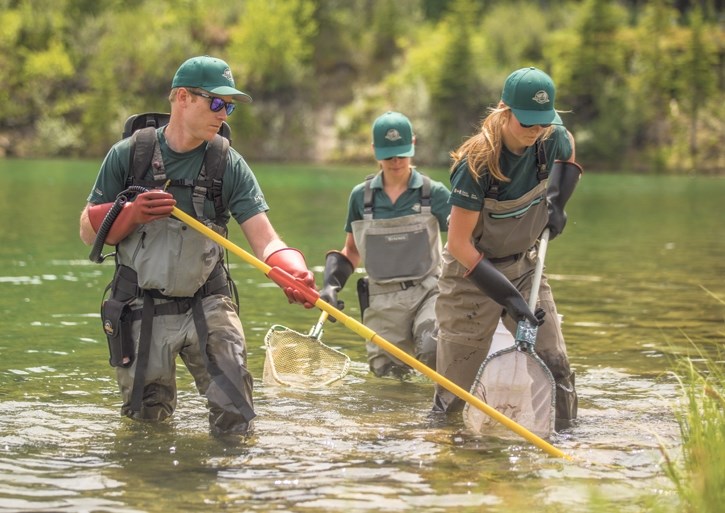Parks Canada has so far killed and removed up to 30,000 fish from Johnson Lake and its surrounding streams and wetlands as it continues to try and eradicate whirling disease from the 18-hectare lake.
Parks Canada officially closed the lake and the surrounding area in August 2016 in an effort to reduce the spread of the disease, which was officially confirmed a month later by the Canadian Food Inspection Agency (CFIA). It was the first time the disease was detected in Canada.
In response, Parks implemented a three-year plan to remove all fish from the lake.
“We’ve removed about 15,000 brook trout from the wetland and the incoming streams and we’ve removed probably another 15,000 from the lake itself,” said Hedin Nelson-Chorney, a fisheries biologist with Parks Canada.
“Hopefully this year we’ll get most of them, or all of them, out and then we’ll do another year of validation after that.”
To remove the fish, Parks Canada has used several techniques, including electrofishing and gillnets.
“We have 122 gillnets under the ice right now, so those are actively fishing throughout the winter,” said Nelson-Chorney.
“The goal is to have zero fish in the lake and then, after a period of rest, just to ensure that there’s no fish in the lake, we’ll reintroduce native white suckers which would have been present historically.”
On top of removing fish, Parks Canada has also closed all critical habitat for west slope cutthroat trout throughout the park, banned felt soled wading boots and implemented a catch and release policy for all fish, except for two lake trout from Lake Minnewanka.
Whirling disease affects trout, salmon and whitefish and is caused by a parasite called Myxobolus cerebralis, which produces spores. The spores are eaten by Tubifex worms found in aquatic environments, which pass them along to infect fish.
Once inside the fish, the parasite affects the cartilage near the spine, leading to skeletal deformities of the spine or skull. This causes the fish to abnormally whirl in a tail-chasing behaviour; hence the name “whirling disease.”
The spores can be transmitted by equipment used for swimming, paddling, boating and fishing, as well as animals which visit the body of water.
The disease is not harmful to humans.
“The biggest vector is humans moving live fish around watersheds,” said Nelson-Chorney.
To better understand how the disease is spread, a graduate student at the University of Calgary is currently looking at whether Tubifex worms are found throughout the Cascade, Panther and Spray River watershed.
“It’s the secondary host for whirling disease. If the worms are there, then whirling disease has the potential to be there,” said Nelson-Chorney. “It doesn’t guarantee that it’s there, but if you don’t have the worms there then there’s no way the disease is there.”
Despite the agency’s best efforts to stop the spread of the disease, Alberta Environment and Parks has detected it in the Bow, Oldman and Red Deer River watersheds.
In October 2016, CFIA confirmed the disease was detected in a commercial aquaculture fishery licensed by the province. It’s not clear if that’s how the disease found its way to Johnson Lake.
“We have no idea where it came from, but we can speculate that it probably came from a hatchery program,” said Nelson-Chorney.
Whirling disease has been observed in the United States since the 1950s and is prevalent in western and northeastern states.




